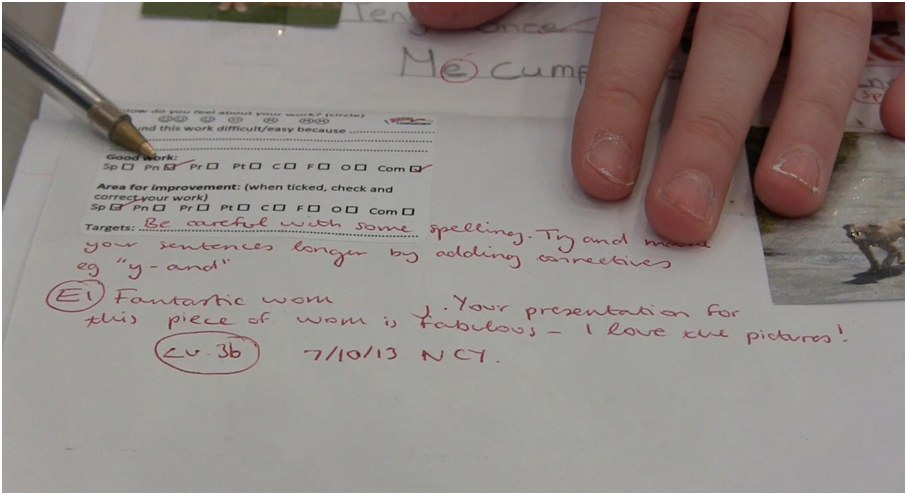Research with School Students: Four Innovative Methods Used to Explore Effective Teaching
DOI:
https://doi.org/10.31273/eirj.v2i2.115Keywords:
innovative research methods, young people, education, interviews, draw and tell, child-led, child rights, primary, secondary, student voiceAbstract
This article outlines four research methods we’ve employed to enhance how students from low-income backgrounds engage in research exploring effective teaching. It firstly outlines the need to be innovative, drawing Article 12 of the United Nations Convention on the Rights of the Child, and then moves on to explain two methods that scaffold a semi-structured interview, one child-led classroom tour and finally a creative ‘draw and tell’ approach. It argues that these methods are successful because they disrupt the researcher-participant power imbalance using the following techniques: Familiarity to the student, empowering the student to be an expert, and giving the student choice.
Downloads
References
Angell, C., Alexander, J., and Hunt, J. A. (2014), ‘‘Draw, write and tell’: A literature review and methodological development on the ‘draw and write’ research method’, Journal of Early Childhood Research, August, 1-12
Briggs, C. (2003), ‘Interviewing, Power/Knowledge and Social Inequality’ in Jaber F. Gubrium, and James A. Holstein (eds), Postmodern Interviewing, Thousand Oaks: Sage, pp. 242-55
Clark, A. (2004), ‘The Mosaic Approach and Research with Young Children’, in Lewis. V., Kellett, M., Robinson, C., Fraser, S., and S. Ding (Eds), The Reality of Research with Children and Young People. London: Open University pp. 142-161
Clark, A. (2010), ‘Young children as protagonists and the role of participatory, visual methods in engaging multiple perspectives’, American Journal of Community Psychology, 46(1-2), 115-123
Denzin, N.K. and Lincoln, Y.S., (2000), Handbook of Qualitative Research, 2nd Edition. London: Sage.
Flick, U. (2002), An Introduction to Qualitative Research, London: Sage.
Gallagher, M,, (2008), ‘Data Collection and Analysis’ in Tisdall, K., Davis, J. M., and Gallagher, M. (eds). Researching with children and young people: Research design, methods and analysis, London: Sage, pp. 65-77
Gauntlett D., (2004) Using new creative visual research methods to understand the place of popular media in people’s lives. Paper presented at the IAMCR, Porto Alegre, Brazil, 25–30 July, 2004
Johnson, J, and Weller, S., (2001), ‘24 Elicitation Techniques for Interviewing’, in Jaber F. Gubrium, and James A. Holstein (eds), Handbook of Interview Research, Thousand Oaks: Sage, pp. 491-515,
Kay, E., Tisdall, M., Davis, J.M., and Gallagher, M (2009), ‘Glossary of Terms’, Researching with children and young people: Research design, methods and analysis, London: Sage, pp. 223-31
Langsted, O., (1994). ‘Looking at quality from the child’s perspective’, In Moss, P., & Pence, A., (Eds.), Valuing quality in early childhood services: New approaches to defining quality (pp. 28–42). London: Paul Chapman.
Lincoln, Y.S. Guba, E.G., (1985), Naturalistic Enquiry. London: Sage.
Lohm, D. and Kirpitchenko, L. (2014), ‘Interviewing Pairs: Discussions on Migration and Identity’, in Research Methods Cases, London: Sage
Lundy, L., (2007), ‘Voice is not enough: Conceptualising Article 12 of the United Nations Convention the Rights of the Child’, British Educational Research Journal, 33(6), 927–942
Lundy, L and Welty, E., (2013), ‘A children’s rights-based approach to involving children in decision making’, Journal of Science Communication, 12(03), 1-5
Moss, G., (1989), Un/Popular Fictions. London: Virago.
Morrow, V., and Richards, M., (1996), ‘The ethics of social research with children: an overview’, Children & Society, 10, 90–105.
Thomson, P. (Ed.). (2009), Doing visual research with children and young people. London: Routledge.
United Nations Committee on the Rights of the Child, (2009), General Comment no. 12, The Rightof the Child to be Heard (CRC/C/GC/12), http://www.refworld.org/docid/4ae562c52.html, accessed 17/10/14

Published
Issue
Section
License
Authors who publish with this journal agree to the following terms:
Authors retain copyright and grant the journal right of first publication with the work simultaneously licensed under a Creative Commons Attribution License (CC-BY), which permits use and redistribution of the work provided that the original author and source are credited, a link to the license is included, and an indication of changes which were made. Third-party users may not apply legal terms or technological measures to the published article which legally restrict others from doing anything the license permits.
If accepted for publication authors’ work will be made open access and distributed under a Creative Commons Attribution (CC-BY) license unless previously agreed with Exchanges’ Editor-in-Chief prior to submission.
Authors are able to enter into separate, additional contractual arrangements for the non-exclusive distribution of the journal's published version of the work (e.g., post it to an institutional repository or publish it in a book), with an acknowledgement of its initial publication in this journal.
Authors are permitted and encouraged to post their work online (e.g., in institutional repositories or on their website) prior to and during the submission process, as it can lead to productive exchanges, as well as earlier and greater citation of published work. (see: The Effect of Open Access)
